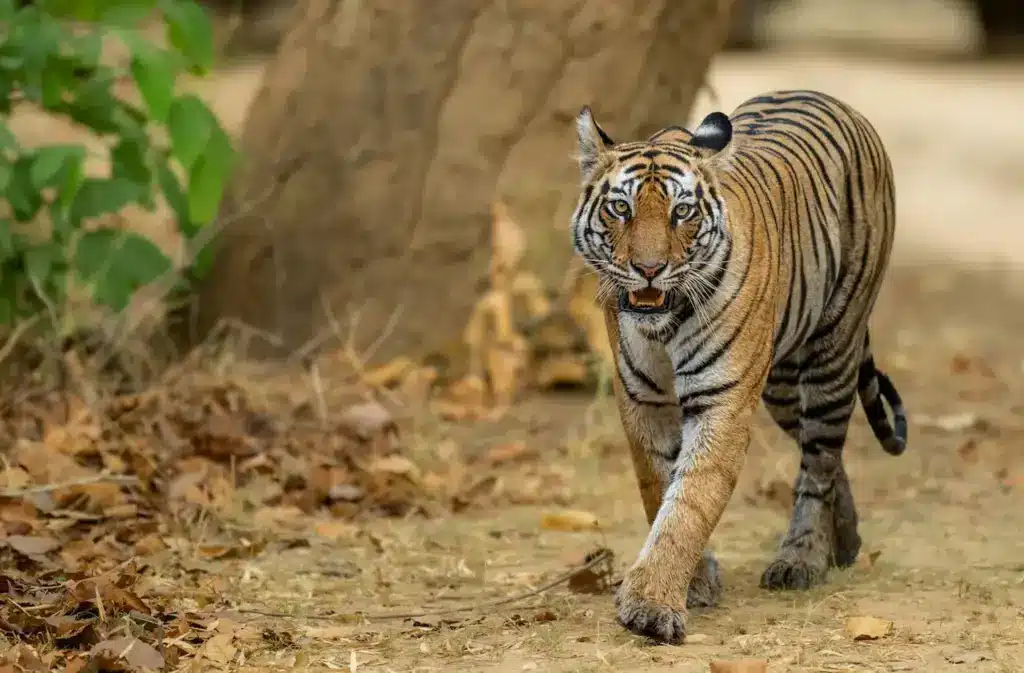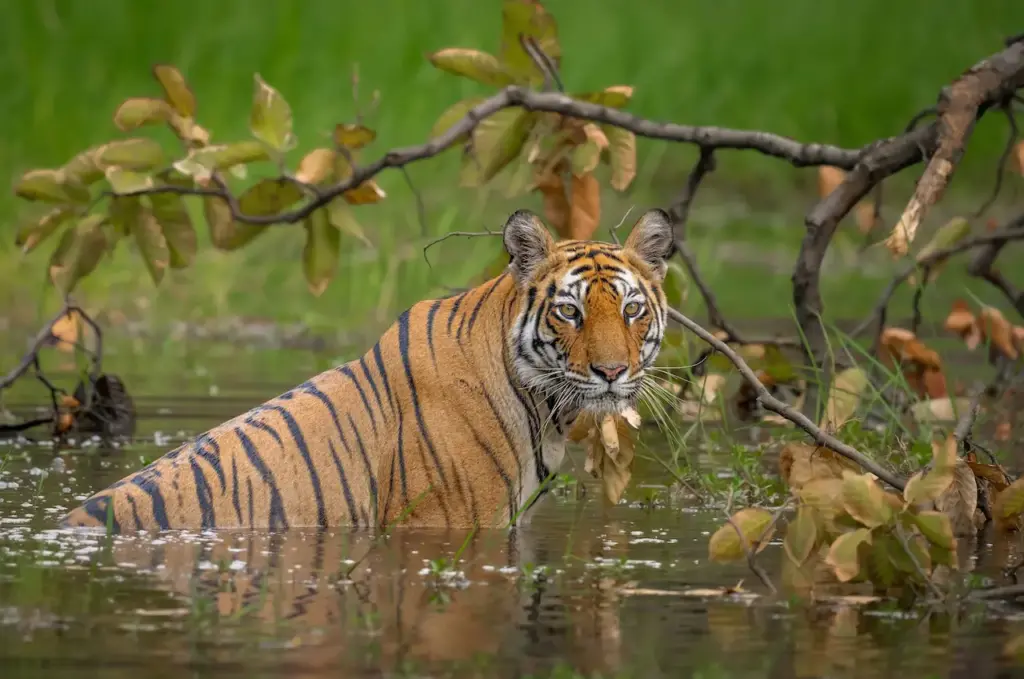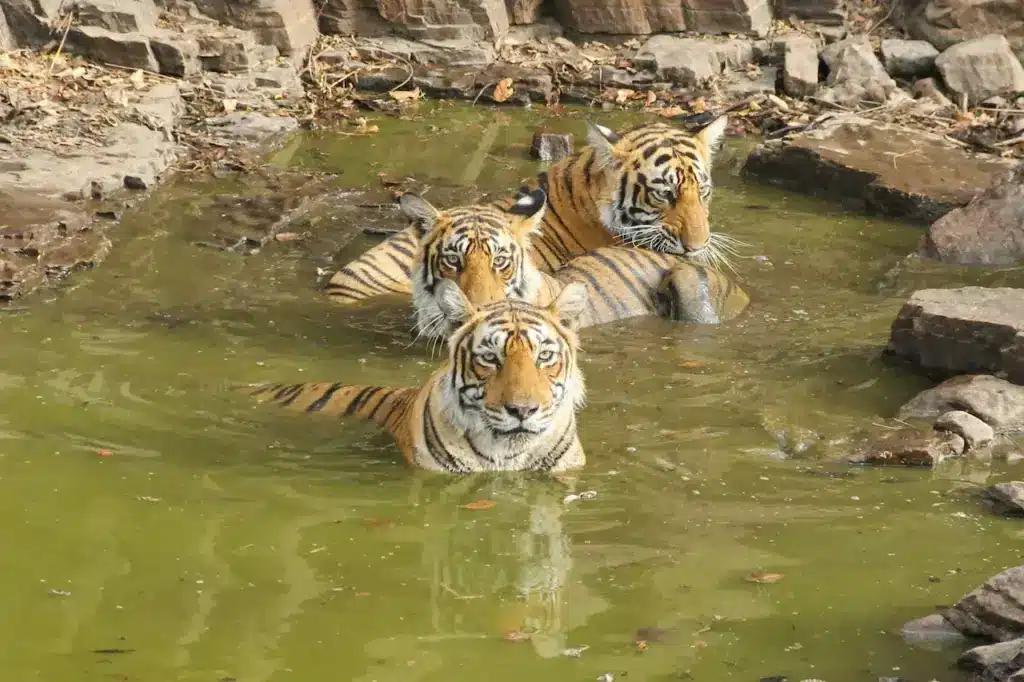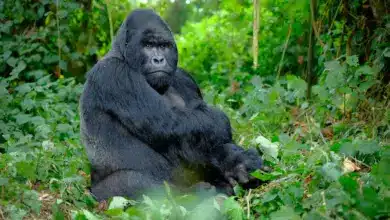Leonardo Dicaprio Endangered Tigers
It May Be Untrue That Poachers Are Still Killing A Tiger A Day. But That's Only Because The Illegal Hunters Are Running Out Of Tigers.
How many Leonardo DiCaprios would it take to save the world’s remaining endangered tigers?
[ez-toc]

In November, DiCaprio, the Hollywood star, arrived in St. Petersburg, Russia, to attend an international conference on tiger conservation that was being hosted by Vladimir Putin, the most powerful Russian politician as well as a huge fan of endangered tigers, of which his country has a few hundred still living in the wild. Mr. DiCaprio expressed his deep concern as a dedicated conservationist, set a wonderful example by taking out his own checkbook, and—perhaps most importantly—helped direct a bright, if temporary, spotlight of public attention onto wild tigers, which are in grave peril of forever slipping off the face of the earth within the next decade.
At this desperate point, the cause of tiger conservation can certainly use all the attention it can get. However, the twenty-first century tide of factors rising against tigers has become so strong it is uncertain that anything—even the power of the stars—will be able to turn it. But, of course, we have to try.
All in all, perhaps somewhat more (or somewhat fewer) than 3,000 tigers remain at large in Asia’s dwindling wildernesses, down from an estimated 100,000 a century ago and falling fast, mostly to the snares and rifles of poachers who feed a lucrative illegal Asian market for their hides, bones and body parts. So devastating has the poaching been that loss of habitat, by far the main threat to most of the world’s other endangered species, is only second on the list of daunting problems facing tigers.
India, the country with the largest remaining tiger population, provides a good illustration of the species’ plight: In 2003, conservationists estimated the number of Indian tigers at 3,600. Today, a mere 8 years later, there are only around 1,300 Bengal tigers left in the country, with most of the loss caused by illegal hunting.
Nor is India an exception. Late last year, TRAFFIC, the international wildlife-trade monitoring network, reported that over the previous decade, law enforcement authorities in the 13 Asian “tiger range” countries—India included—had seized parts of 1,069 tigers that had been killed illegally. Because only a portion—and undoubtedly a small one—of poached tigers are ever recovered by law enforcement, the actual number taken by traffickers is presumed to be a shocking multiple of TRAFFIC’s figure.
The Amur, or Siberian, tiger subspecies native to Putin’s Russia has been the single bright spot in the otherwise dark picture of global tiger conservation. Down to fewer than 40 individuals in the 1920s, Siberian tigers have rebounded to a population of between 450 and 500 due to government protection. However—and in spite of the interest of Putin and other highly placed Russians—conservationists say that recently there has been a worrisome increase in the poaching of Russian tigers. The upsurge is doubtlessly due to the fact that the Chinese border lies close to the narrow strip of coastal Far Eastern Russia that is home to the remaining Amur tigers, and folk-medicine manufacturers, wine makers, and boutique restauranteurs in the increasingly affluent China are willing to pay top dollar for all kinds of tiger parts, including bones, eyes and penises. The skin, meat, bones and organs of one tiger can reportedly fetch from $25,000 to $50,000 at the end of the retail chain, and wild tigers are much more highly prized than the ones Chinese entrepreneurs are now raising in pens because they allegedly contain more “magic.”
According to the Environmental Investigation Agency, an international anti-poaching organization, by the mid- to late 1990s, illegal hunters were killing a wild tiger every day to supply the lucrative and growing Asian market. An EIA spokesperson told AllAboutWildlife.com that probably fewer tigers than that are currently being killed—but only because they’ve become so scarce that illegal hunters are having a harder time finding them. (More on the Chinese market for tiger parts here.)
In St. Petersburg, Leonardo DiCaprio posed for a photo with Vladimir Putin, and he generously pledged $1 million of his own money toward easing pressures on the world’s remaining, desperately beleaguered tiger populations, which are divided among five surviving subspecies. (Three subspecies have already been driven into extinction, and the extinction of one other, the South China tiger, is strongly suspected.) In addition, the actor, in conjunction with the World Wildlife Fund, has since launched a new public campaign to call attention to the threats faced by this critically endangered predator species.
Nor were DiCaprio and Putin the only high-profile people to appear at the International Tiger Conservation Forum: Other attendees on hand to talk about tigers included Chinese Premier Wen Jiabao, the prime ministers of Nepal and Bangladesh, supermodel Naomi Campbell, actor Dick van Dyke, and World Bank head Robert Zoellick. Although tiger forums have been held in other years and in other countries, Putin’s event was exceptionally high-profile and well-attended because of his sponsorship, as well as the fact that it was taking place at the close of the Chinese Year of the Tiger, which ended February 2.
Conservationists in attendance pointed out that never before have high-level world leaders—meaning the politicians who showed up, rather than DiCaprio and Campbell—met to discuss the fate of a single, non-human species. The same groups expressed approval over the forum’s resolution to double wild tiger populations by the next Year of the Tiger—2022—as well as at least a bit of optimism about the fact that various governments, conservation groups and individuals at the forum had pledged a total of $330 million in funding and loans for projects related to tiger conservation over the next five years, a figure that works out to somewhere around an astonishing $100,000 per wild tiger remaining in the world.

And, if wishes, good will, and the sincere concern of celebrities and world leaders could immediately be converted into concrete accomplishment, then the Putin event would have already succeeded in saving tigers from extinction. Unfortunately, few organizations involved with saving the tiger seem to think that the steps taken in St. Petersburg go far enough, or even necessarily herald a meaningful turn in the tiger’s plunging trend.
For example, while the sum of money “pledged” for the next five years sounds impressive, the World Wildlife Fund, one of the leading international conservation groups, says that “new” monies promised in Russia actually amount to around $127 million, including Mr. DiCaprio’s $1 million and at least $50 million that the WWF itself will be pitching in—with hopes of coming up with an additional $35 million.
That funding must be divided among 13 countries (though not necessarily evenly) and sustain effective tiger-conservation efforts for half a decade . . .
Other organizations assert that much of the money discussed in St. Petersburg, in addition to not being enough to get the job done, also is not targeted specifically at tiger protection or conservation, despite being earmarked for conservation projects in tiger habitat.
AllAboutWildlife.com asked two conservation leaders active in directly trying to prevent tiger poaching—one in India, and one based in London and working internationally—how they assessed the outcome of the St. Petersburg forum.
Debbie Banks, lead campaigner for the London-based Environmental Investigation Agency, told us the following during an exchange of e-mails:
“EIA is generally of the view that it is a good thing that the Global Tiger Recovery Program and Leaders Declaration has been signed and that there is some level of commitment to double the tiger population by 2022. We recognise that it is unprecedented for world leaders to convene over a single species, as 5 did during the high level segment of the Forum.
“However, we remain concerned that countries were promising to undertake actions that they have been promising since the last Year of the Tiger. We didn’t get any sense in the lead up to the Forum that there had been an honest appraisal of why so many of those earlier promises and commitments remain unimplemented, or that underlying factors had been identified and will be addressed.
“We captured our comments on the Forum itself on our blog . . . and we¹ve set out what we believe are short-term and long-term indicators of future progress in this report, Enforcement not Extinction: Zero Tolerance.
“Regarding the sum of money pledged in St Petersburg, for a start it comes nowhere close in generating enough to save wild tigers, but the other factor to bear in mind is that a lot of the funding pledged is tied up with forest and REDD [carbon emissions] projects, relating to some parts of the tiger’s range but not all of it. Other funding streams committed at the meeting were in loans.
“Big money and loans often get tied up in red tape and are slow to be released. Only a small portion of funds committed so far could potentially be channelled into rapid action funds to go straight to anti-poaching units or investigation teams to pay for things like informants, fuel, assistance with court cases, etc. Also, the chances of those funds trickling down to localised NGOs [Non-governmental organizations] or NGOs that are not embedded in the process of implementing the GTRP, is slim.
“Further, the amount of money that has been pledged for tigers is dwarfed by the anticipated investment of $4.7 trillion into infrastructure [development] projects that may well dice up the tiger’s habitat even further.

“EIA’s work focuses much more on the transnational criminal networks controlling the trade in tigers (and other Asian big cats), by looking more at the market end of the trade. Unless action is taken at that end of the chain, then tigers in the wild will always be under threat. Our report, Enforcement not Extinction, highlights the fact that effective enforcement to combat the trade is not rocket science; if we, as a small NGO, can find traders in China offering tiger skin, bone, teeth, claws, if we can get their names, telephone numbers, if we can get them to talk about the trade, their perceptions of enforcement, their connections across borders, well then surely the Chinese government can [do the same].
“Certainly there has been a decline in the volume of skins openly for sale in China since we began our intensive forays into the market places in 2005. The trade is much more under the counter than it used to be, so it’s not so easy to “count” what’s out there now. We’ve adapted our methodology and are more targeted in our approach to understand[ing] the dynamics of the trade, so that official enforcement agencies can develop more informed strategies. It is still relatively easy to encounter traders; we just haven’t had the resources to cover all potential trade hubs, so its not possible to be scientific about it. It’s more of an indication that the problem definitely hasn¹t gone away; stock is still moving into the retail end of the chain, and evidence from seizures in India and Nepal show that it’s still fresh from the jungles (as opposed to captive bred).
“I would say that in looking forward, and reflecting on the promises made in St Petersburg, real indicators of change would include evidence of official investigations surrounding seizures, confirmation that actionable intelligence is being shared between relevant countries (preferably via INTERPOL), that trans-national operations are being set up to target the criminals that are controlling the trade, evidence of swift and meaningful convictions against poachers, traffickers and consumers.”
Banks concluded, “If we start to see these signs of increased investment in enforcement, and that it is becoming more sophisticated and strategic, then I think we can have hope.”
For the Indian perspective, AllAboutWildlife.com communicated with Belinda Wright, executive Director of the Wildlife Protection Society of India (WPSI), who told us:
“As you can see from the attached figures, poaching figures over the past four years have remained fairly constant. Considering the fact that tiger numbers have presumably reduced, this is not good news. Protection in the field is abysmal and the pressure on wild tigers remains severe. Prices for tiger parts have skyrocketed—due to the rarity of wild tigers and China’s growing economy— and there is more incentive than ever for tiger poachers. And even if a poacher is caught, the judicial system is so overburdened that it takes years for a case to reach a conclusion. In the last decade 882 people have been accused in tiger poaching and seizure cases, but only 18 people have been convicted in just six court cases. Under these circumstances, it is difficult to be optimistic that tiger poaching in India and elsewhere can be drastically reduced in the foreseeable future.
“Another very serious concern is the widespread poaching of [the tiger’s] prey species for meat. In many areas tigers have no choice but to venture out into human habitation in search of food. This in turn leads to increased human-tiger conflict.
“The problems are: poaching, lack of protection and good enforcement, lack of convictions in the courts, low prey density and poaching of prey species, habitat encroachment, human-related disturbances, human-tiger conflict, no accountability for park managers, and lack of
political support to implement recommendations. Also, at least six tiger reserves are severely affected by [political] insurgents.
“The needs are: better intelligence-led, professional enforcement, improved infrastructure and training for field staff, the filling of field staff vacancies, better leadership, political support for tiger conservation measures, etc.
“Despite the gloomy overall picture, in the past couple of years the Government of India has made some important initiatives for tiger conservation. These include a huge increase in funding—funds for anti-poaching, infrastructure, tiger monitoring and the relocation of villages from inside tiger reserves. . . . Special Tiger Protection Forces are being established to police the tiger reserves. There is also a huge increase in both awareness and interest in tiger conservation issues in India’s civil society.”
A complicating factor in the so-far halting efforts to gear up against poachers operating in fragmented tiger habitats scattered across vast regions of Asia is that wildlife poaching itself recently has been evolving into a sophisticated international crime network. South African authorities report that rhinoceros poachers in that country have taken to using helicopters and night vision optics—equipment at least as good as that of the country’s wildlife law enforcers themselves.
Meanwhile, Asian middlemen in the wildlife trade are so eager to receive illegally harvested wildlife they they apparently have been sending purchasing agents far beyond their own borders in search of endangered species. Last year, a group of Western primate researchers working in Myanmar (Burma) reported having traveled to a remote Burmese village in order to examine the carcass of rare monkey they learned had been shot by one of the villagers—only to be informed that they were too late: A “Chinese man” had arrived on the previous day, purchased the dead monkey, and immediately left town with it.
Is there any doubt that an illegally killed tiger would have been spirited away just as quickly?
As it stands, Myanmar, despite possessing a new tiger preserve the size of Vermont (the world’s largest), is home to probably fewer than 100 tigers of the Indochinese subspecies. In fact, there are probably only 350 Indochinese tigers remaining throughout a native range encompassing vast parts Mayanmar, Vietnam, Cambodia, Laos and Thailand.
BY PAUL GUERNSEY



